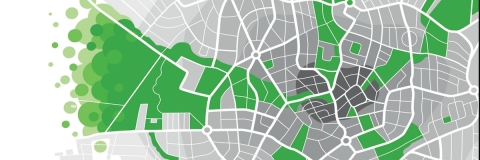

Green Wedge Urbanism
Our Green Wedge Urbanism research is exploring the future of urban development
The 'Green Wedge Urbanism' project aims to tell the history of green wedges in urbanism and investigate their potential as a model for integrating urban development and nature – for new and existing towns, cities and regions.
There is a need to develop a history of the green wedge model of green space planning as there is no overarching discourse about its development, nor about its roles and functions in contemporary planning despite the fact that this model has been used consistently since the beginning of the 20th century to date. Furthermore, how green wedges can have a positive impact on air quality, access to green spaces, the promotion of active recreation, increasing ecological habitats, in mitigating the effects of climate change and in promoting sustainable cities needs to be better understood.
The project involves archival research for identification and analysis of primary sources from key projects, a literature review about the uses of green wedges in city planning in order to bring together currently fragmented knowledge about this model of green space planning, interviews with key governmental personnel and practitioners involved with the management of existing and planning of new green wedges in order to determine the current understanding of decision-makers about the model and to understand how they believe it can help address their city’s needs, analysis of case studies and fieldwork for the identification of functions and roles of green wedges today.
The preliminary project results have been disseminated in conference presentations, guest lectures and journal articles – and a book entitled ‘Green Wedge Urbanism’ was published by Bloomsbury in 2016.
Explore more of our research
Architecture Technologies and Devices
Through our research, we're re-thinking the way we build cities, to better react to environmental issues and challenges, such as climate change.

